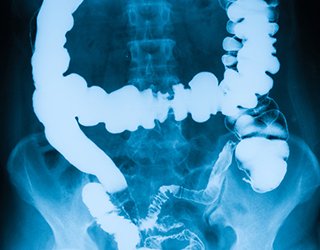Panoramic Dental X-ray


Panoramic radiography, also called panoramic x-ray, is a two-dimensional (2-D) dental x-ray examination that captures the entire mouth in a single image, including the teeth, upper and lower jaws, surrounding structures and tissues.
The jaw is a curved structure similar to that of a horse shoe. However, the panoramic x-ray produces a flat image of the curved structure. It is typically set to provide details of the bones and teeth.
An x-ray (radiograph) is a noninvasive medical test that helps physicians diagnose and treat medical conditions. Imaging with x-rays involves exposing a part of the body to a small dose of ionizing radiation to produce pictures of the inside of the body. X-rays are the oldest and most frequently used form of medical imaging.
Unlike a traditional intraoral x-ray where the film is placed inside of the mouth, the film for a panoramic x-ray is contained inside of the machine.
The jaw is a curved structure similar to that of a horse shoe. However, the panoramic x-ray produces a flat image of the curved structure. It is typically set to provide details of the bones and teeth.
An x-ray (radiograph) is a noninvasive medical test that helps physicians diagnose and treat medical conditions. Imaging with x-rays involves exposing a part of the body to a small dose of ionizing radiation to produce pictures of the inside of the body. X-rays are the oldest and most frequently used form of medical imaging.
Unlike a traditional intraoral x-ray where the film is placed inside of the mouth, the film for a panoramic x-ray is contained inside of the machine.
A panoramic x-ray examination requires no special preparation.
You will be asked to wear a lead apron as a safety precaution to protect the rest of your body from any radiation exposure that may scatter from the panoramic x-ray beam. You may also be asked to remove your jewelry from the region being imaged, eye glasses and any metal objects that might interfere with the x-ray images.
Women should always inform their dentist or oral surgeon if there is any possibility that they are pregnant. Many imaging tests are not performed during pregnancy so as not to expose the fetus to radiation. If an x-ray is necessary, precautions will be taken to minimize radiation exposure to the baby. See the Safety page for more information about pregnancy and x-rays.
You will be asked to wear a lead apron as a safety precaution to protect the rest of your body from any radiation exposure that may scatter from the panoramic x-ray beam. You may also be asked to remove your jewelry from the region being imaged, eye glasses and any metal objects that might interfere with the x-ray images.
Women should always inform their dentist or oral surgeon if there is any possibility that they are pregnant. Many imaging tests are not performed during pregnancy so as not to expose the fetus to radiation. If an x-ray is necessary, precautions will be taken to minimize radiation exposure to the baby. See the Safety page for more information about pregnancy and x-rays.
A panoramic x-ray exam is painless, fast and easy and may be recommended over intraoral x-rays for patients that have a sensitive gag reflex.
Other Guidlines













